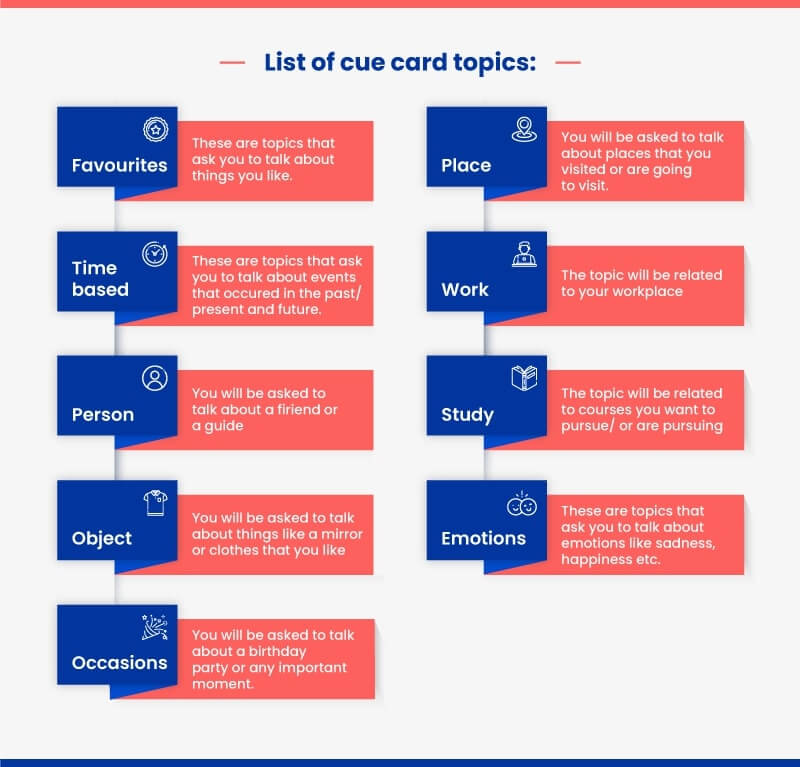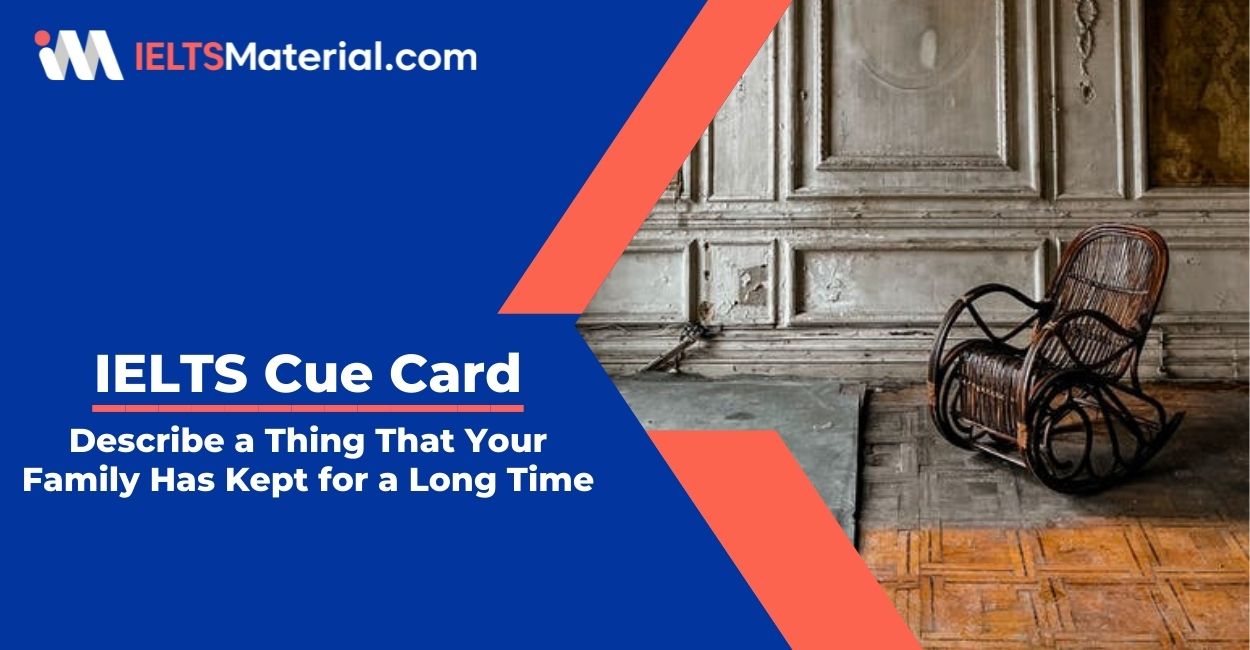Latest IELTS Speaking Cue Card Topics with Samples Answers (2025)
-
Copy link

Predicted Cue Cards Topics 2024
“Struggling with IELTS Speaking Part 2? Get the latest cue card topics with sample answers to boost your confidence and fluency. “
The IELTS Speaking test can be intimidating, especially when you’re handed a cue card with just a minute to prepare. But don’t worry! With the right strategy and practice, you can confidently tackle any topic. This blog covers the latest IELTS Speaking Cue Card topics along with expert tips to help you respond naturally—without memorized answers.
Keep reading to boost your speaking fluency and ace Speaking Part 2 of the IELTS Speaking test with a good IELTS band score!
What is a Cue?
A cue is a prompt or signal that helps guide your response or action. In the IELTS Speaking test, a cue is a short phrase or sentence that introduces the topic you'll be discussing.
What is an IELTS Cue Card?
An IELTS Cue Card is a small card that provides a topic along with specific instructions or guiding questions. In the Speaking test (Part 2: Long Turn), you'll receive a cue card and have one minute to prepare before speaking for up to two minutes on the topic. Cue cards test your fluency, coherence, IELTS Vocabulary, and IELTS Grammar. The key to scoring well is speaking naturally—not memorizing answers!
Ready to grab that band 9 in your IELTS Speaking? Get our latest E-book now and start preparing like a pro!
Latest List of IELTS Cue Card Topics
Below is a categorized list of the latest IELTS cue card topics that have appeared in actual exams. Each topic comes with sample answers to help you prepare effectively. Browse through the list and choose the ones that best suit your practice needs!

Have you gone through all the IELTS Speaking cue card topics with sample answers? If so, you’ve likely gained a clear understanding of how to tackle them effectively.
Boost your confidence and ace the IELTS Speaking test effortlessly! Sign up for a FREE demo!
How to Approach an IELTS Speaking Cue Card?
When presented with an IELTS cue card in the Speaking test, follow these essential steps to structure a confident and well-organized response:
- Take a few seconds to understand the topic, instructions, and guiding questions.
- Use the one-minute preparation time wisely to organize your thoughts and outline key points.
- Once the examiner signals you to begin, speak naturally, covering all aspects of the topic.
- Showcase your language skills by using a range of IELTS vocabulary and accurate grammar.
- Ensure your response lasts 1-2 minutes, maintaining a steady pace without rushing or pausing too much.
Different Parts of the IELTS Speaking Test
The IELTS Speaking test consists of three parts.
| Section | Details |
|---|---|
| Part 1 (Introduction and Interview) | IELTS Speaking Part 1 involves answering general questions about yourself, your family, work, studies, or interests. |
| Part 2 (Long Turn) | In IELTS Speaking Part 2, you'll receive a cue card with a topic and specific instructions. You'll have one minute to prepare your response and then speak for 1-2 minutes. |
| Part 3 (Discussion) | IELTS Speaking Part 3 involves a more abstract discussion on the topic introduced in Part 2. The examiner will ask you additional questions related to the topic to assess your ability to express ideas and opinions. |
Alright, let's wrap this up with a bang! Mastering the IELTS cue card is no easy feat, but with the right strategies and a sprinkle of confidence, you'll be unstoppable. Remember, the key is to embrace the challenge, channel your inner wordsmith, and let your unique personality shine through.
Important Tips for IELTS Speaking Cue Cards
Following are some important tips for IELTS Speaking cue cards:
- Stay calm and focused: During the one-minute preparation time, don’t rush. Take a moment to organize your thoughts and think about examples you can use.
- Use examples: Whenever possible, add personal experiences or specific examples to support your answers. This makes your response more interesting and relevant.
- Don’t memorize answers: Avoid memorizing answers as it might sound unnatural. Focus on speaking naturally, even if it means giving a less polished answer.
- Be descriptive: Show your language proficiency by adding detail and elaborating on your responses, rather than giving simple yes/no answers.
Alright, let's wrap this up with a bang!
Mastering the IELTS cue card may seem challenging, but with the right strategies and a boost of confidence, you can ace it effortlessly. The key is to embrace the challenge, think on your feet, and express yourself naturally. Stay calm, be authentic, and let your personality shine through!
To excel in your IELTS Speaking test, consider taking Free IELTS Online Classes; Book a Seat Now!
Frequently Asked Questions
How many points will a cue card have?
How do I answer a cue card?
How do I change a cue card question?
Do I get to use ‘umms’ and ‘aahs’?
Does the examiner know what is in my cue card?
Recent Articles


Kasturika Samanta




